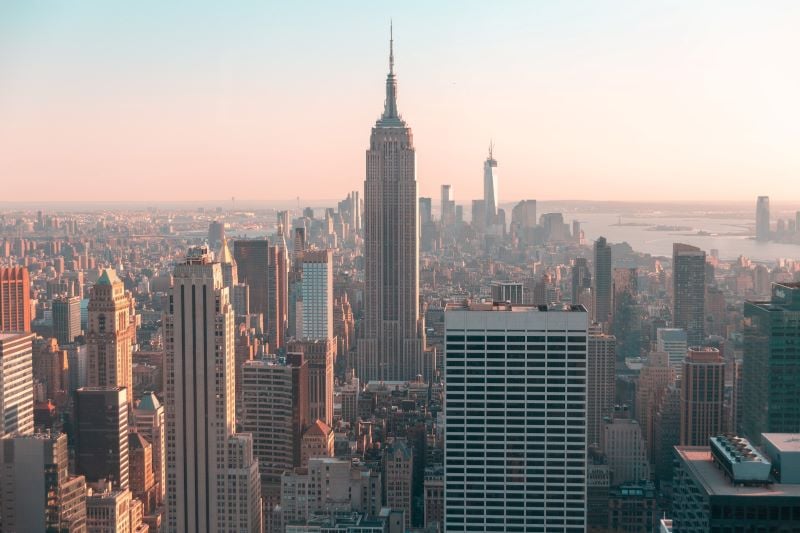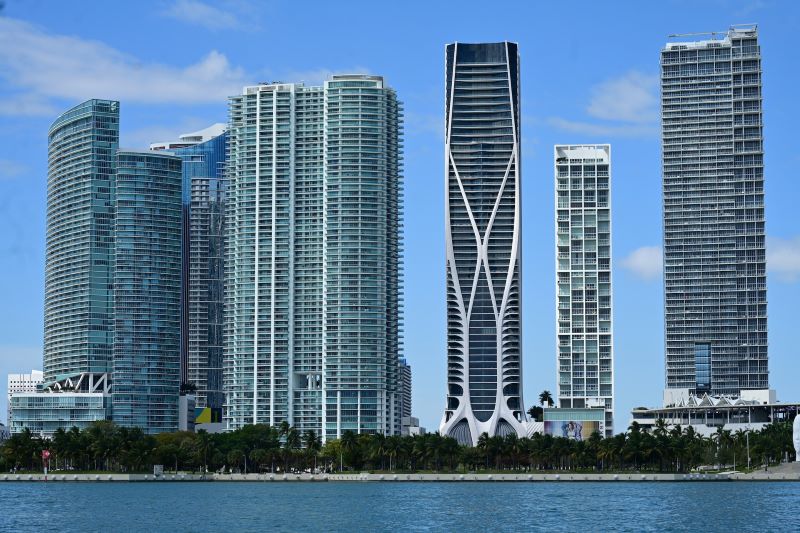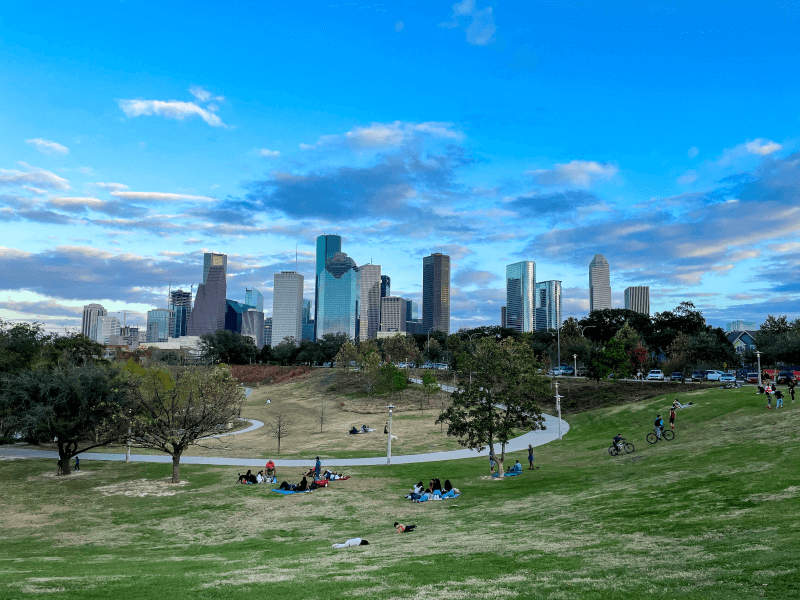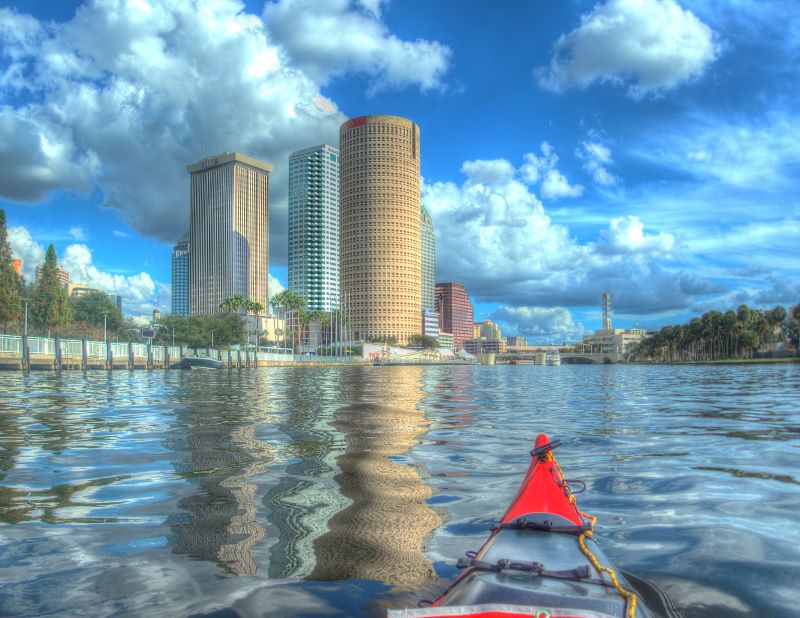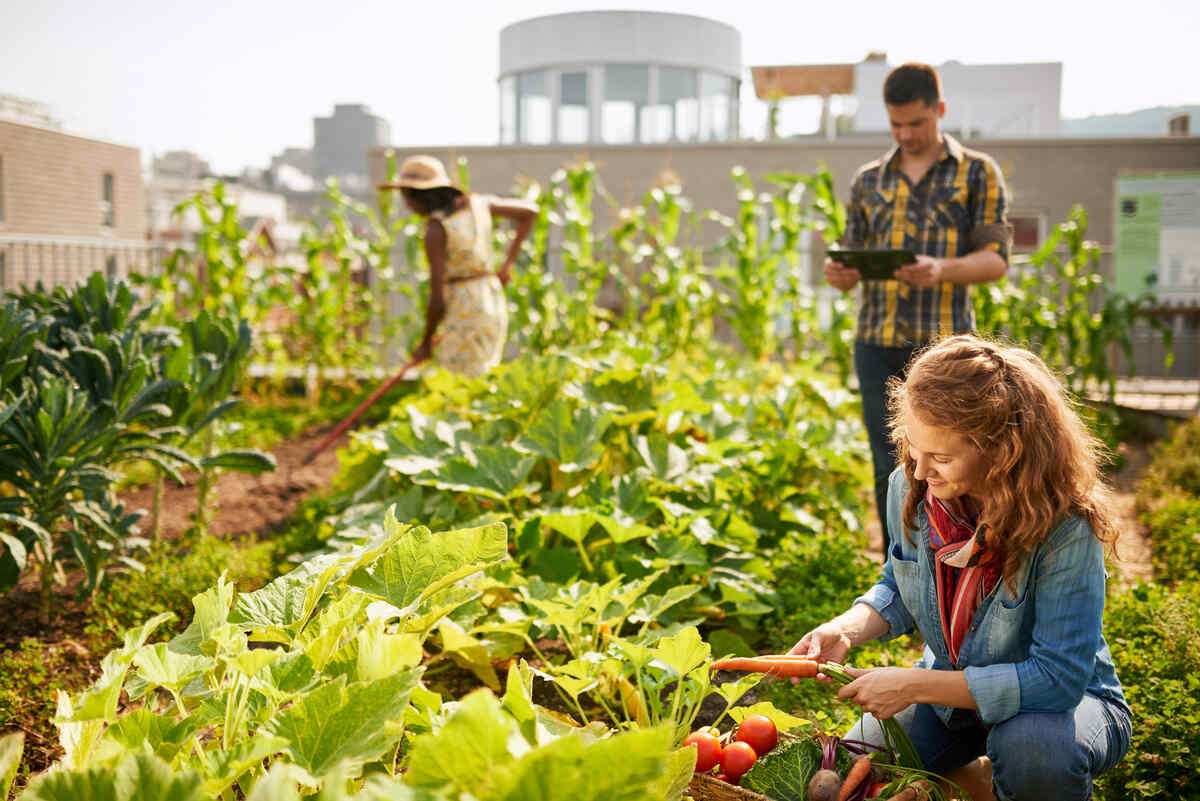
Which American cities are best for growing produce in the backyard, on a patio, or in a nearby community garden?
To mark May as Gifts from the Garden Month, LawnStarter ranked 2024’s Best Cities for Urban Gardening.
We compared the 500 biggest U.S. cities based on 4 categories. We looked for cities with plenty of room for gardening, in addition to accessible gardening supplies, ideal climates, and gardening clubs, among 14 total metrics.
Grab your trowel and dig through our ranking below. To learn how we ranked the cities, see our methodology.
Contents
- City Rankings
- Top 5 Close Up
- Key Insights
- Ask the Experts
- Methodology
- Final Thoughts: Green Thumbs for Everyone
- Media Resources
City Rankings
See how each city fared in our ranking:
Top 5 Close Up
Check out the slideshow below for highlights on each of our top 5 cities.
Key Insights
New York sprouted to 2nd place with 639 more community gardens than Atlanta (No. 1), which claims the 2nd-most. Community plots are necessary for many gardeners in NYC where few residents have access to a private outdoor space. However, the Big Peach outgrows the Big Apple thanks to large yards, abundant sunshine, and 39 regional gardening clubs — the most in our ranking.
All 38 Florida cities scored in the top 70 of our ranking with a long growing season and ideal gardening climate.
- Urban farmers in Miami (No. 3) and its nearby suburb Homestead (No. 14) enjoy impressive access to plant nurseries and gardening stores but lack yard space for designing a big garden.
- Jacksonville (No. 9) and Orlando (No. 8), are home to several community gardens, while Tampa (No. 5) and Fort Myers (No. 7) each grow a community food forest.
Many cities in Northern states — such as Massachusetts, Michigan, and New Jersey — landed near the bottom, with short growing seasons, little sunshine, and poorer access to gardening supplies.
Ask The Experts
Growing your own food is certainly rewarding, but developing your green thumb as a beginner can be tricky.
We turned to a panel of experts to help sprouting gardeners navigate the urban garden landscape. Read through their insights below.
- Besides sheer pleasure, what are the top 3 benefits of gardening?
- What are your top 3 tips for first-time gardeners?
- For those who live in big cities with few or no community gardens, what are the best alternatives?










Besides sheer pleasure, what are the top 3 benefits of gardening?
- Reconnecting with nature and with yourself
- Contributing to the preservation of the environment
- Contributing to your own health
What are your top 3 tips for first-time gardeners?
- Observe and learn.
- Educate yourself, asking who knows more.
- Experiment/try and exchange seeds/plant material/tips.
For those who live in big cities with few or no community gardens, what are the best alternatives?
Use an indoor space or a balcony/patio, and produce microgreens, even on a windowsill.

Besides sheer pleasure, what are the top 3 benefits of gardening?
Gardening is great physical exercise. Ornamental gardens provide spaces you can enjoy outdoors, and vegetable gardens provide great access to healthy food.
What are your top 3 tips for first-time gardeners?
- Use plants in masses; don’t plant just one.
- Pay attention to the soil; everything starts there. If your soil is not healthy (loose and rich, moist enough but not wet) your plants won’t do well.
- Pick plants that flower or fruit over a period of time. Don’t go to the garden center and pick everything that is blooming now. You want to have extended interest in your garden and food to harvest throughout the year.
For those who live in big cities with few or no community gardens, what are the best alternatives?
You can garden in containers on balconies or on the roof (if it is flat).

Besides sheer pleasure, what are the top 3 benefits of gardening?
- For many years, gardening has been promoted as an activity that engages seniors and keeps their bodies and minds active. An elevated gardening surface, such as a raised bed, makes it easier for someone who might be older, or have mobility issues, to garden. Learn more about the Centers for Disease Control and Prevention’s views on gardening and healthy aging.
- Parents, teachers, and others who interact with children use gardening as a way to help them learn “where their food comes from.” Young children may not understand that food in the grocery store or the flowers they see in a shop have to be sown/propagated and nurtured to reach a certain size and maturity level before being harvested and/or eaten.
- Specific plants are shown to help build pollinator populations, such as bees, butterflies, other beneficial insects, and hummingbirds. Several plants are available that are visually appealing and provide shelter and nectar/pollen for these and other valuable pollinators. The U.S. Forest Service provides an overview of gardening for pollinators.
- Home gardeners also tend to enjoy the benefit of harvesting their food. Satisfaction can range from growing something from seed to having access to specific vegetables, fruits, and herbs that are not available in their local area.
What are your top 3 tips for first-time gardeners?
- Start small. As with any hobby, it is easy to invest a fair amount of money to buy seeds, plants, supplies, etc. It may not be until someone goes through an entire growing season to decide whether they enjoy grown plants and gardening. While a flower garden certainly can increase the visual appeal of an outdoor space, there is a bit of work involved before, during, and even after the season ends.
- Talk to neighbors and gardeners in your area, and ask them what grows well for them. Ask where they get seeds and plants and if there are any groups or clubs in the area that allow gardeners to get together, in person or online, and learn from each other.
- Contact the local Extension services, and learn about programs and educational opportunities for home gardeners. Gardeners can find a calendar of events for in-person and online classes ranging from one-time seminars to a series of sessions, some for free and some for a fee. Master Gardeners volunteers associated with each state’s Extension service are often the ones who provide educational programming to homeowners. The American Horticultural Society website includes contact information for the Master Gardener program in the U.S. and Canada.
For those who live in big cities with few or no community gardens, what are the best alternatives?
There are many options for city dwellers with a small patio or balcony or no exterior space to grow some flowering plants, vegetables, small fruits, and herbs.
Containers work for outdoor and indoor gardening, but there are many planters that will fit over outdoor balcony railings if there is a lack of floor space. There are lightweight containers that attach to glass for indoor gardening that can be used to grow microgreens, herbs, and small houseplants.
Hanging baskets will also work for areas with limited floor space.
Additionally, several small hydroponic systems are available that only require homeowners to plug the unit in to an electrical socket, fill it with water, add fertilizer every other week, insert seed pods, and wait for flowers to bloom or plants to be ready for harvest.

Besides sheer pleasure, what are the top 3 benefits of gardening?
I think a big benefit of home gardening, both for produce gardening and landscaping, is that it of course offers a pleasurable hobby, but it improves our outdoor environment in a multitude of ways.
There is the improved economic value of gardens and landscaping from a real estate standpoint, but it also creates more outdoor living space for a home, where we all have spent more time recently.
An inviting garden or landscaped back porch can do a lot for our overall health and well-being as a place of refuge and relaxation.
What are your top 3 tips for first-time gardeners?
For first-time gardeners, I recommend to start small, and learn as you go. Start with a small garden or even container gardening to get an idea of what you like and how things grow. My other tip is just keep learning — as long as we’re learning, we’re growing.
For those who live in big cities with few or no community gardens, what are the best alternatives?
For small spaces, container gardening is a great option with lots of possibilities and flexibility. There are endless options for size, material, style, and function, depending on the space and what the goals of the gardening are. A small back porch or deck can be transformed with container gardening.

Besides sheer pleasure, what are the top 3 benefits of gardening?
There are physical, mental, emotional, and social benefits to gardening. To reduce it to one sentence is certainly an oversimplification, but there is growing research evidence for each of these areas in youth, adults, and older adults.
What are your top 3 tips for first-time gardeners?
My top three tips for new gardeners:
1. Ask your garden center for a plant that is easy to grow and/or forgiving of water stress. New gardeners tend to over- or under-water, having a plant that can handle this will give them more success and confidence for future plants.
2. Read the labels, and look up the plants for mature size. Put the plant in the environment it needs, and give it the space that it needs. Water, sunlight, nutrition, and mature size should be considered. (If you have children or pets that like to put things in their mouth, check for toxicity also.)
3. Be kind to yourself. If you don’t succeed with your first plant/crop, don’t give up; try again. Try to determine what might have gone wrong and do things differently next time, or maybe pick a different plant. Don’t beat yourself up over a plant that didn’t make it. Learn and move forward.
For those who live in big cities with few or no community gardens, what are the best alternatives?
There are some great small-scale hydroponic systems that can go on the floor in a corner or smaller for your countertop. Interior plants in pots around your home are great for air quality and connecting to nature. Vertical gardening on a balcony adds life to a space also.

Besides sheer pleasure, what are the top 3 benefits of gardening?
- Unlike humans, plants use carbon dioxide from the air and produce oxygen. Growing new plants and maintaining our landscape’s health improve our environment and reduce pollution.
- Exposure to sunlight while protecting our skin improves vitamin D in our body and increases calcium level to benefit our bones and immune system.
- It is a free exercise and reduces stress.
What are your top 3 tips for first-time gardeners?
- Take time to get the correct information; many resources are out there, including the UCANR Master Gardener Program website.
- Do it right, and do not be shy to ask for help.
- Be sure to get the plant materials from reliable, safe, certified sources.
For those who live in big cities with few or no community gardens, what are the best alternatives?
Gardening is very beneficial even when using small potted plants; some plant species grow indoors, and also, I would recommend the succulents for people who do not have time, as they do not need too much care.

Besides sheer pleasure, what are the top 3 benefits of gardening?
- Health (mental and physical)
- Beauty
- Fun
What are your top 3 tips for first-time gardeners?
- Start small.
- Walk around the neighborhood, look at what is doing well, begin with things that thrive.
- If possible, plant in the fall so roots have time to develop before hot weather.
For those who live in big cities with few or no community gardens, what are the best alternatives?
- Garden on your balcony.
- Grow shade-loving plants indoors.

Besides sheer pleasure, what are the top 3 benefits of gardening?
Complex question, but studies have shown that connecting with nature helps restore the soul. There is also “pride” in your home/landscape. Some who mow their own lawn mention good exercise. Overall, personal DIY satisfaction.
What are your top 3 tips for first-time gardeners?
Don’t try and be too ambitious, know what you can/can’t do, and hire pros for certain things.
Most homeowners are highly capable of mowing their own lawns and even feeding and basic spot-spraying for pesky weeds like the dandelion. If you are thinking of core aerating your lawn, you might consider a professional.
Know where to find reliable, unbiased help like university websites. There are also a few apps out there to help ID pests like our Purdue Turf Doctor or TurfPath.
For those who live in big cities with few or no community gardens, what are the best alternatives?
Not an easy answer, but I have heard a number of stories about people gardening on their apartment balconies (container gardening). This is preferable to simply finding an area and planting veggies.
Many urban soils are not very good for growing much of anything due to poor soil structure and a lack of soil organic matter, which can affect plant growth.
Additionally, there are some small hydroponic systems for growing spices.

What are the top 3 benefits of gardening?
1. For me, the biggest benefit of gardening is being close to the earth and witnessing the miracle of life up close. Until you have your hands in the soil and watched a seed transform into a flower, fruit, or vegetable, you haven’t lived.
2. After that, I love the sheer beauty of God’s creation, flowers especially. I love all flowers and if you ask me what my favorite flower is, I really can’t say. It would be like asking me to choose which of my children I love best.
3. Probably the best reason that I garden is to create a habitat for the birds and pollinators. The birds are in trouble. Do you know that all birds need caterpillars to feed their young? Insects are very important for birds. We must better understand the interconnectedness of life. We truly are all connected.
Read more here: There’s a Party Going On in That Soil!
What are my top 3 tips for first-time gardeners?
1. When I owned my garden center for 21 years, I used to always tell my customers that we can’t buy back time, so plant that tree now! Don’t wait, and don’t overthink it. Just plant the right tree in the right place and many of them.
2. When planting, never plant deeper than it was in that pot. The biggest cause of tree/shrub/plant death is being planted too deeply. Even 1-2 inches too deep may be enough to rot the trunk because of the soil moisture. If anything, plant it one inch higher than the pot, to allow for settling and mulch.
3. The third tip is similar. Never mulch up against the trunks of anything. Keep the mulch outside of the root ball area. Mulch placed against the trunk or mounded will cause the demise of that plant due to fungal diseases.
For more information, see How to Grow a Forest – My 25 Year Experiment.
For those who live in big cities with few or no community garden, what are the best alternatives?
I have had my share of living in apartments and places where I can’t garden much outside. But that never stopped me from having houseplants, balcony plants or even planting around the grounds of the apartment or condo areas, if they would allow me.
It’s easy to take a large pot and plant it with what you like. Do you like fresh herbs? Plant those. Do you like to attract butterflies? You can plant a wonderful butterfly garden in a pot. Do you like flowers? There are flowers for every season. Don’t let yourself be discouraged just because you don’t have a large area. I’ve seen fantastic balconies filled with all kinds of trees, teeming with life.
If you don’t have a balcony, then a windowsill of herbs may be just enough to take your cooking to the next level. And don’t forget houseplants, which will clean our indoor air. There are so many beautiful ones to choose from. No excuses!
Methodology
First, we determined the factors (metrics) that are most relevant to rank the Best Cities for Urban Gardening. We then assigned a weight to each factor based on its importance and grouped those factors into 4 categories: Access, Supplies, Climate, and Support. The categories, factors, and their weights are listed in the table below.
For each of the 500 biggest U.S. cities, we then gathered data on each factor from the sources listed below the table.
Finally, we calculated scores (out of 100 points) for each city to determine its rank in each factor, each category, and overall. A city’s Overall Score is the average of its scores across all factors and categories. The highest Overall Score ranked “Best” (No. 1) and the lowest “Worst” (No. 500). Note: The “Worst” among individual factors may not be No. 500 due to ties.
Sources: Almanac, American Community Gardening Association, Civil Eats, Community Food Forests, Federal Housing Finance Agency, Meetup, National Garden Clubs, National Oceanic and Atmospheric Administration, The Real Yellow Pages, and U.S. Department of Agriculture
Final Thoughts: Green Thumbs for Everyone
Growing plants in the city comes with unique challenges, but apartment dwellers and folks with big backyards can all reap the benefits of gardening.
Thanks to innovative technology like hydroponics and grow lights, folks can easily enjoy gardening while indoors or in small outdoor spaces.
Community gardens can unite neighbors and expand access to fresh food, which is an urgent need in urban food deserts where residents have to travel a mile or more to the nearest grocery store.
New to gardening or just in need of some inspiration? Check out our tips and ideas below.
- Learn how to water your garden efficiently.
- Plant a pizza veggie garden.
- Make the most of a shady space.
- Design the purr-fect cat-friendly garden.
- Explore vertical gardening techniques.
- Automate watering with sprinklers.
- Maximize room with square foot gardening.
- No ground, no problem — build a container garden.
- Start a compost pile or buy a compost bin to reduce waste.
- Stay up to date on shifting hardiness zones as the climate changes.
Hire a local LawnStarter crew to get your backyard ready for breaking ground on your new garden.
Media Resources
Quotes from LawnStarter Editor-in-Chief Jeff Herman:
- 5 cities — Atlanta (No. 1), Portland (No. 6), Evanston, Illinois (No. 10), San Francisco (No. 12), and Louisville, Kentucky (No. 13) — tied for having 2 community food forests, the most in our ranking. 39 other cities in our ranking enjoy 1 food forest.
- Los Angeles (No. 21) and a handful of its suburbs tied for the longest growing season — 353 golden days of gardening per year.
- Florida and Illinois are the only 2 states in our ranking with a “Right to Garden” law, meaning local officials cannot prevent residents from growing their own food.
- Urban agriculture isn’t so popular for city dwellers in top farming states like Kansas and Indiana. Only 3 cities — Wichita, Kansas (No. 231), and Indiana cities Bloomington (No. 91) and Indianapolis (No. 93) — from these 2 states finished in the top half of our ranking. The remaining lack access to gardening clubs and supplies.
- Despite having numerous community gardens, big cities like Boston (No. 277) and Detroit (No. 479), landed in the bottom half due to their cold climates and poor gardening supplies access.
- High-resolution images of cities
- 2023’s Best Cities for Urban Gardening ranking results
- 2022’s Best Cities for Urban Gardening ranking results
Main Photo Credit: AYAimages / Adobe Stock / License

